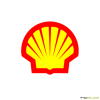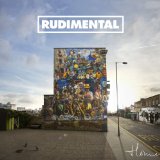Individual Savings Accounts (ISAs) were introduced in April 1999 to replace old-style tax free savings. Many people think ISAs are complex, but it's simply a tax-free account into which you can place either cash or shares.
This is a full guide to help you tell your ISA from your elbow.
In this guide
Also in this guide
This is a full explanation of how ISAs work. If you already know the basics you may want to go straight to the Top Cash ISAs guide where we list all the best buys.
 What is an ISA?
What is an ISA?
 If you've got any savings, or investments, you should have an ISA, simple as that. The reason? It saves tax and therefore increases returns. For years, whether on telly, radio or in m'book, I've used the same analogy to explain ISAs. So why stop now? Here come the cakes!
If you've got any savings, or investments, you should have an ISA, simple as that. The reason? It saves tax and therefore increases returns. For years, whether on telly, radio or in m'book, I've used the same analogy to explain ISAs. So why stop now? Here come the cakes!
 What can be put in an ISA?
What can be put in an ISA?
 Whether for cash or shares, an ISA should be the first stop for your savings. The way it works will depend on the type of savings you put in.
Whether for cash or shares, an ISA should be the first stop for your savings. The way it works will depend on the type of savings you put in.
-
Cash ISAs
Use a standard instant access savings account, and basic rate taxpayers have to give 20% of the interest earned straight to the Government. For higher-rate taxpayers, this leaps to 40%, and for 'additional rate' taxpayers it's 45%.
Cash ISAs are simply savings accounts where the interest isn't taxed, meaning it's incredibly rare for a normal savings account to pay more interest.
For example, for a cash ISA paying 3% AER to be beaten, a basic-rate taxpayer would need a savings account offering 3.75%, while anyone paying higher rate tax would need 5% - and those accounts currently aren't out there.
Just like normal savings accounts, there's a variety of cash ISAs available, such as instant access, fixed rate, and accounts with base rate guarantees. For details of the daily updated best payers, read Top Cash ISAs.
-
Stocks and shares ISAs
Share-based investments in various forms are ISA-able. Shares in individual companies may be placed inside what's called a shares ISA, which are usually managed by stockbrokers.
However, it's more usual for stocks and shares ISAs to be held in collective investment vehicles like unit or investment trusts. These are pooled investments where a fund manager picks a selection of shares based on geographic or sector criteria and the value of the investment depends on the collective performance of the shares picked.
Placing investments inside an ISA wrapper provides three tax advantages. First, any profits made from share price increases aren't eligible for capital gains tax, second, it enables all the tax on bonds to be reclaimed, and third, it means dividend income's taxed at 10% - a significant saving for higher and additional rate taxpayers.
For the cheapest way to buy shares ISAs, read the Discount Brokers guide.
 How much can be invested?
How much can be invested?
 ISAs have become less complex over the years. Each tax year, everyone aged 16 and over for cash ISAs (18 and over for stocks & shares ISAs), has an ISA allowance which sets the maximum that can be saved within the tax-free wrapper from April to April.
ISAs have become less complex over the years. Each tax year, everyone aged 16 and over for cash ISAs (18 and over for stocks & shares ISAs), has an ISA allowance which sets the maximum that can be saved within the tax-free wrapper from April to April.
The current limit is �11,520, up to �5,760 of which can be in the form of cash. The whole chunk could be used for shares if you wish. There are three basic scenarios:
-
Using the maximum cash allowance. You can put �5,760 into a cash ISA, leaving �5,760 available to fill with shares (though you obviously don't have to use this).
-
Use it all for shares. You are allowed to invest in �11,520 worth of shares. However this leaves no room for tax-free cash savings.
-
Mix 'n' match. Any amount under �5,760 can be saved in cash, then the rest of your �11,520 allowance put in a shares ISA. For example, someone saving �2,000 in a cash ISA has �9,520 left to invest in shares.
Any savings or investments must be made by 5 April, the end of the tax year. Crucially, unused allowances (or portions of them) don't roll over; they are lost for good.
This means an ISA should always be the first place any savings go, as after the tax year ends, any savings or investments stay within the tax-free ISA wrapper for the future, where they'll continue to earn interest.
This means it's possible to have substantial amounts invested within ISA wrappers; �7,000 per year from 1999 to 2008, �7,200 per year until 2010, �10,200 for 2010/11, �10,680 in 2011/12 �11,280 for 2012/13, �11,520 for 2013/14, then rising by inflation each year after that, plus the gains (interest or investment returns) made in each year.
If I want to save AND invest � should I use my ISA for cash or shares?
OK so here we�re assuming you�re doing both � this isn�t about choosing which one is best (that depends purely on your attitude to risk) but whether you gain more from putting savings into an ISA or shares.
The gain from ISAing cash is simple: you don�t get taxed on the interest.� But with shares, whether you actually gain from putting it in an ISA depends on your circumstances.
- Are you eligible for capital gains?� Share ISAs exempt you from Capital Gains tax (basically a tax on profits).� Yet you can make �10,600 a year of profits before being hit by Capital Gains anyway, so this protection only really helps those who are selling sizeable assets within one tax year � otherwise it's irrelevant.
- Will you put money into bonds?� If you�re investing in bonds � like some corporate bonds or Government gilts � then you get the income without it being taxed in any case. For other bonds, a shares ISA will shelter the income from tax.
- Will you have dividend income? If you have dividend income, it's taxed at 10% for basic, 32.5% for higher, and a whopping 37.5% for additional rate taxpayers. Dividend income in from a shares ISA is taxed at 10%, meaning it's no different for basic rate payers, but can represent a significant saving for others.
So small investors who won�t use their capital gains and are putting cash in shares investments will gain more using their cash ISA�s to the limit, then putting the rest in shares.� Big investors especially those putting money in bonds should max out their shares ISAs.
 How can you withdraw money?
How can you withdraw money?
 A common mistake is to think an ISA needs to be held for a set length of time in order to reap the tax-free benefits. Luckily, that's wrong! Providing the rules of the individual product allow it (there's loads that do), you can have full, instant access to your money without losing the tax benefits on the rest of your savings in the wrapper.
A common mistake is to think an ISA needs to be held for a set length of time in order to reap the tax-free benefits. Luckily, that's wrong! Providing the rules of the individual product allow it (there's loads that do), you can have full, instant access to your money without losing the tax benefits on the rest of your savings in the wrapper.
But once the money's withdrawn, it can't be returned. A few examples should help clarify this:
Situation: Mr Rich Devil invests �11,520 in a shares ISA at the beginning of the tax year.
Options: He may sell the whole investment, or part of it, at any time without losing the tax benefits. But no more may be bought inside that year's ISA wrapper.
Situation: Ms Irma Indecisive invests �2,000 in a cash ISA at the start of the tax year.
Options: She may save up to a further �3,760 in the cash ISA, or �9,520 in a shares ISA (or a mix of the two) before the end of the tax year.
Situation: Irma then decides she needs to withdraw �1,000 of this cash.
Options: There's no problem withdrawing the money; while the �1,000 was in the ISA its interest wasn't taxed. However, the fact she has withdrawn the cash doesn't increase her allowance at all - she can still only put �3,760 more in the cash ISA, or �9,520 in the shares ISA.
It's also worth noting that if you have an ISA that pays interest annually, and you decide to close your ISA before the interest is due to be paid, you will still get the accrued interest paid on the account (less any penalties for closure/withdrawal - check your T&Cs;).
 Can I switch provider once I'm set up?
Can I switch provider once I'm set up?
 There's nothing stopping you switching provider for cash or shares ISAs. In fact, to make sure you continually get a top rate, this will be essential, particularly for cash ISAs. Yet it isn't like switching a standard savings account; transferring an ISA is a technical process.
There's nothing stopping you switching provider for cash or shares ISAs. In fact, to make sure you continually get a top rate, this will be essential, particularly for cash ISAs. Yet it isn't like switching a standard savings account; transferring an ISA is a technical process.
Yet as long as you abide by my golden ISA transfers rule, it should go smoothly:
Never, ever, ever, ever withdraw the money yourself!
You'll immediately lose all the tax benefits.
Instead, speak to the new provider and fill out a transfer form. This will usually include a note you can send to your existing ISA company. Your new provider should then sort it all out, including moving the money over for you, keeping your tax benefits intact. If you transfer a shares ISA, it may be necessary to pay another initial charge.
That's the key thing to remember. But when transferring ISAs, what you can do depends on which type of ISA you want to transfer.
-
Current year's cash ISA. You may move ALL of this to another cash ISA, or into a shares ISA. You cannot split it into more than one provider or ISA type.
-
Current year's shares ISA. You may move ALL of this to another shares ISA, but you can't move it to a cash ISA, or split it between more than one shares ISA.
-
Past years' cash ISAs. You may move ALL of this to another cash ISA or into a shares ISA, or SPLIT it between more than one cash or shares ISA.
-
Past years' shares ISAs. You may move ALL of this to another shares ISA, or SPLIT it between more than one shares ISA. You may not move any of it into cash ISAs.
Not all ISA providers will accept transfers of previous years' allowances. To see the best ones that will, read the Transferring Cash ISAs guide.
 What about TESSAs, PEPs and mini-ISAs?
What about TESSAs, PEPs and mini-ISAs?
 Personal Equity Plans (PEPs) and Tax-Exempt Special Savings Accounts (Tessas) were forerunners to ISAs during the '80s and '90s. Once ISAs were introduced, there were also mini- and maxi- ISAs.
Personal Equity Plans (PEPs) and Tax-Exempt Special Savings Accounts (Tessas) were forerunners to ISAs during the '80s and '90s. Once ISAs were introduced, there were also mini- and maxi- ISAs.
All these tax free savings accounts have been converted into ISAs.
If you had cash in a mini-ISA, this is now just a cash ISA. A mini shares ISA is now just a shares ISA. And if you had a maxi ISA (a combination of cash and shares) then the shares element will be a shares ISA, and the cash element a cash ISA.
Tessa and PEP cash will also now be cash ISAs. It's worth checking any old accounts, as it's likely they're all paying rubbish rates of interest. See the Transferring Cash ISAs guide for the current top payers. All these accounts accept any old cash ISA savings.
If you think you had either of these investments, or a standard ISA, but are now not sure what has happened to it, it's possible to track down old accounts and reclaim the funds (plus any interest) inside them. Read the full Reclaim Forgotten Cash guide.
 Shell �20 of petrol for �10
Shell �20 of petrol for �10 Burger King 2for1 & more
Burger King 2for1 & more Domino's 2for1 for �1
Domino's 2for1 for �1







